#new objectivity
Text

Franz Sedlacek - Lied in der Dämmerung (Song in the Twilight), 1931
#franz sedlacek#lied in der dämmerung#song in the twilight#surrealist art#bat#magical realism#new objectivity#art#painting#🦇
2K notes
·
View notes
Text

Heinrich Vogeler (1872-1942) — Worker of a Hamburg Shipyard (Hamburg Comrade) [oil on canvas, 1928]
362 notes
·
View notes
Photo
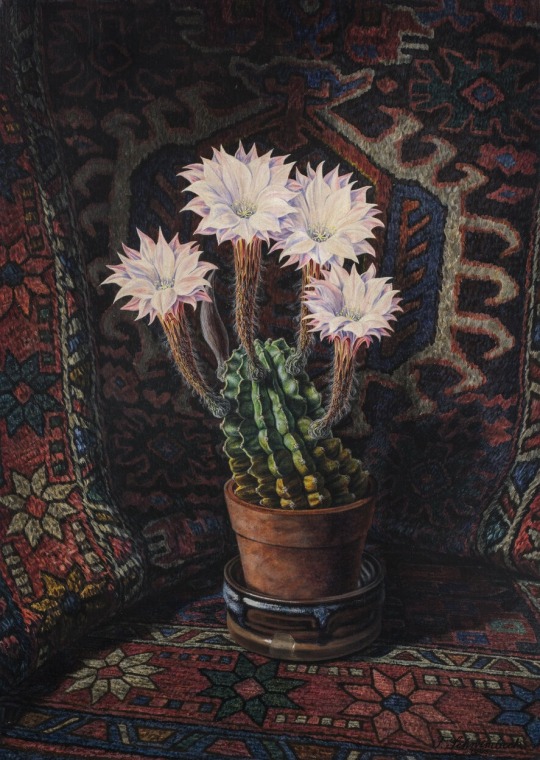
Fritz Schwimbeck
Blooming Cactus. 1943
#fritz schwimbeck#painting#still life#realism#new objectivity#post-expressionism#modern art#german artist#ambrose naumann fine art
3K notes
·
View notes
Text
Otto Dix · Sylvia von Harden
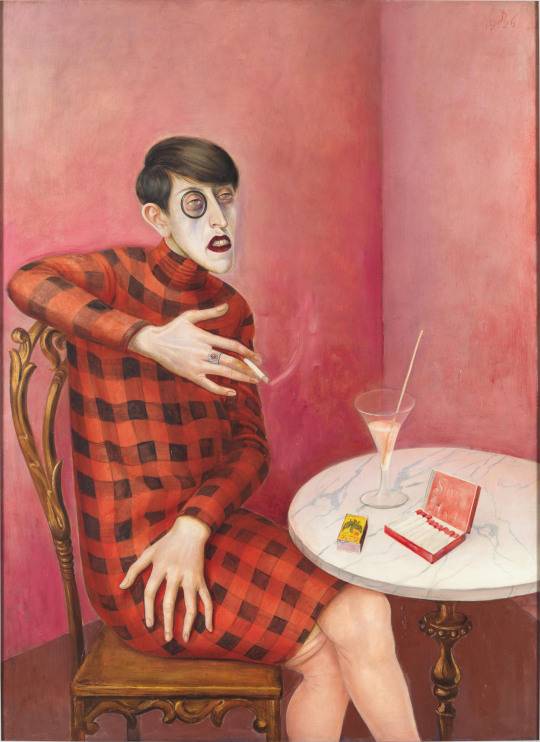
Otto Dix (1891-1969) ~ Bildnis der Journalistin Sylvia von Harden, 1926. Oil and tempera on wood | src Centre Pompidou
view & read more on wordPress

[Note the inscription of her aristocratic name "Sylvia von Harden" on the inner cover of the cigarette box]
Journaliste à Berlin dans les années 1920, Sylvia von Harden (1894-1963) s’affiche en intellectuelle émancipée par une pose nonchalante. Otto Dix contrarie son arrogance par le détail d’un bas défait. Sa robe-sac à gros carreaux rouges détonne avec l’environnement rose, typique…
view & read more on wordPress
#Otto Dix#androgynous#Sylvia von Harden#August Sander#die neue frau#weimar republic#Journalistin#monocle#neue frau#Neue Sachlichkeit#portrait#new objectivity#new woman#tempera on wood#oil on wood#painting#Porträt#retrato#ritratto#portret#1920s#retrat#Bildnis#Sylvia von Halle#tempera painting#gemalde#the new woman#Weimar#weimar era#weimar republic art
74 notes
·
View notes
Text
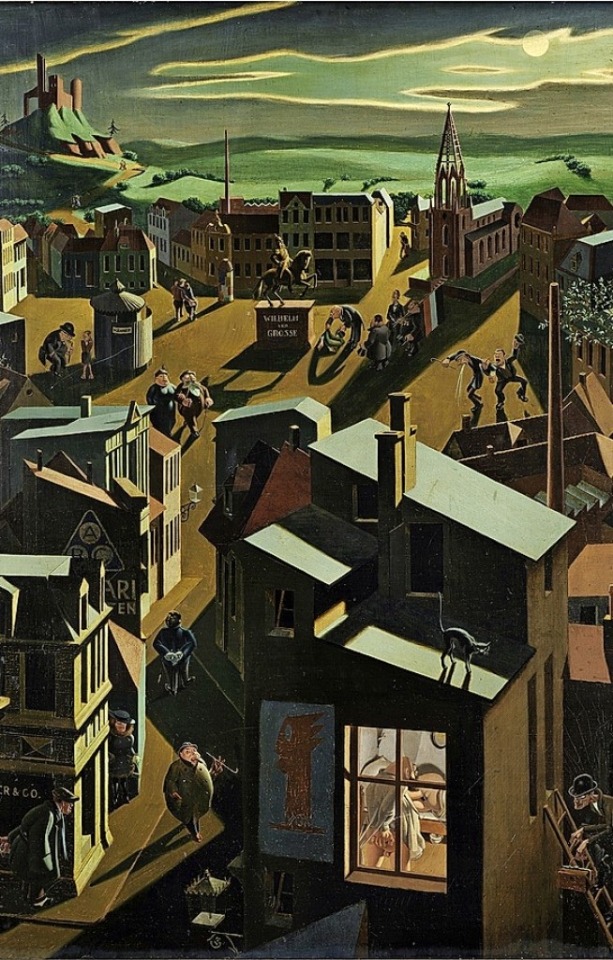
Georg Scholz, Deutsche Kleinstadt bei Nacht, 1923
#Georg Scholz#new objectivity#neue sachlichkeit#weimar republic#modern art#1920s berlin#weimar berlin#1920s painting#magic realism#modernism#babylon berlin#voyerurism#spooky#German village#1920s Germany
172 notes
·
View notes
Text

Niklaus Stoecklin. Forest mushroom still-life. 1943
396 notes
·
View notes
Text
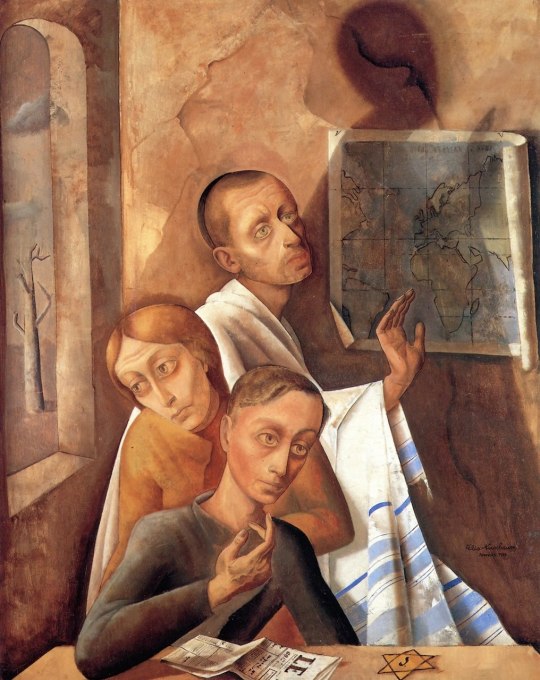
Felix Nussbaum (German-Jewish, 1904-1944). Group of Three • 1944 • Deutsches Historisches Museum.
#art#painting#fine art#art history#felix nussbaum#german-jewish artist#oil painting#new objectivity#art movements#emotional artwork#symbolic painting#surrealism#surrealist art#20th century european art#pagan sphinx art blog#art education
71 notes
·
View notes
Text

Max Frey - The Light Giver (1934)
232 notes
·
View notes
Text
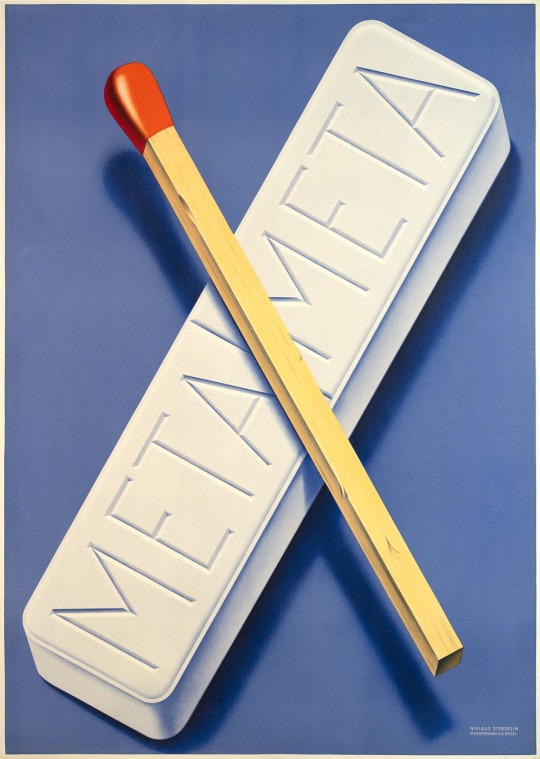
Niklaus Stoecklin
META META
1941
#Niklaus Stoecklin#swiss painter#swiss art#swiss artist#Swiss painting#graphic designer#graphic art#graphics#commercial art#commercial artist#graphic design#meta#meta meta#new objectivity#neue sachlichkeit#modern art#art history#aesthetictumblr#tumblraesthetic#tumblrpic#tumblrpictures#tumblr art#aesthetic#beauty#tumblrstyle
26 notes
·
View notes
Text

George Grosz - Punishment (Strafe), watercolor, 1934.
44 notes
·
View notes
Photo

OTTO DIX / “SADISTEN GEWIDMET” / 1922
[watercolor, pen, ink & pencil on paper | 49.8 x 37.5 cm.]
217 notes
·
View notes
Text

Franz Sedlacek (1891-1945) - Gespenst über Den Bäumen (Ghost Above the Trees), 1928
#franz sedlacek#gespenst über den bäumen#ghost above the trees#surrealist art#symbolist art#solitude#ghost#new objectivity#magical realism#art#painting
892 notes
·
View notes
Text

Conrad Felixmüller (1897-1977) — Death of the Poet Walter Rheiner [oil on canvas, 1925]
360 notes
·
View notes
Text


The First World War for many German artists was a catalytic experience that changed their work forever. Although Max Beckmann “only” volunteered as medical orderly and unlike e.g. Otto Dix didn’t sit tight in the trenches, the experience initiated a drastic shift in his work: where before Beckmann had dealt with historical topics in a late impressionist idiom that channeled influences from Rembrandt, Goya and early Cézanne, from 1915 onwards his style developed into what he himself coined „transcendental objectivity“, an amalgamation of Expressionism, Cubism and late medieval art. It was a direct reaction to the horrors he was confronted with as medical orderly and followed a nervous breakdown in the same year: biblical scenes, crammed into tight spaces and painted in a flat instead of spatial manner from now on are the new direction in Beckmann’s oeuvre. In brutal, almost nightmarish tableaus classical scenes like „Descent from the Cross“ and „Christ and the Sinner“ Beckmann processed the turmoils of war and the societal upheaval it triggered way beyond the end of the war.
Late last year the Neue Galerie in New York dedicated a comprehensive exhibition to Max Beckmann’s formative years between 1915 and 1925 which was accompanied by the eponymous catalogue published by Prestel. In crisp reproductions it features the paintings, drawings and lithographs presented in the exhibition but also features insightful essays by curator Olaf Peters and others. The former provides an excellent analysis of the artists’ dramatic stylistic changes and his reaction to postwar Germany with a particular focus on the disabled veterans. In the lithographic portfolio „Hell“ from 1919 he depicts the traumatized survivors and takes a biting satirical look on postwar society that also represents a link to his later Circus-themed works.
What both exhibition and catalogue quite plainly show is the incredible urgency contained in Beckmann’s works between 1915 and 1925 and with what radicality he reacted to the fault lines in postwar society. At the same time this period forms the basis for all the later works, one of the many reasons for me to warmly recommended the catalogue!
#max beckmann#art book#expressionism#modern art#new objectivity#art history#exhibition catalogue#prestel
25 notes
·
View notes
Text

Martin Imboden (1893–1935) ~ Stillleben, Wien, um 1930 | src Ostlicht Auktionen
The Swiss cabinetmaker and talented amateur photographer Martin Imboden received important impulses in 1929 when he visited the legendary ‘FIFO’, the international exhibition of the German Werkbund. He accentuated his pictorial language, which was oriented towards the New Objectivity, with tight cropping and strong…
view & read more on wordPress
#Martin Imboden#headshot#portrait#Bildnis#still life#Stillleben#new photography#Porträt#neue Fotografie#Neue Sachlichkeit#retrato#ritratto#portret#new objectivity#retrat#nature morte#1920s#1930s#shadow#light and shadow#diagonal#sideways glance
53 notes
·
View notes
Photo

Ernst Neuschul, Messias, 1919. Oil on canvas, 94 x 53 cm
#messias#Ernst Neuschul#1919#Weimar Republic#neue sachlichkeit#new objectivity#selbstbildnis#self-portrait#magic realism#post expressionism#world war one#Babylon Berlin#painting#interwar art#modern art#realism
248 notes
·
View notes